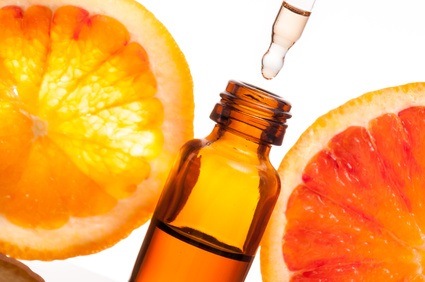An Introduction to Flavor Chemistry

Everything around us is made of chemicals, from the scents of flowers and trees wafting through the air to the organic sun-ripened berries we eat, even every single part of our bodies! Every form of matter is, at some level, made of chemicals. What we taste and smell when we eat is the result of our bodies reacting to these chemicals. Both artificial and natural flavors contain chemicals, and often they contain the same chemicals, they just come from different sources.
Flavor concentrates are blends of various materials, both synthetic and natural, that are usually diluted in a carrier liquid. The most common carriers for flavor are food-safe solvents, most commonly propylene glycol, ethyl alcohol/ethanol, vegetable glycerin, and triacetin. To create a specific taste, chemists blend aromatic chemicals, essential oils, botanical extracts, essences, and anything else they might need to achieve the end product. This can be an extremely complicated process as some flavors require upwards of 300 unique flavor molecules before they are complete.
Some of these flavor molecules exist as liquids, and some are crystals and powders. Flavor chemicals lie on a spectrum of solubility from water soluble (polar) to oil soluble (nonpolar), which can sometimes be a challenge when working with materials that lean strongly one way or the other! Water soluble means that a flavor will dissolve into water, or propylene glycol, or other mediums that are not oils. Like mixing oil and water, if an oil soluble compound is put in water, it will simply separate and float (or sink) and will not combine. For example, cinnamaldehyde is a key molecule used in all cinnamon flavors, but on its own it is not water soluble. It is critical to know how you are planning on applying your flavor, and to be aware of solubility as a factor (or have a good emulsifier on hand). The flavor blends we offer are very concentrated, and are not meant to be ingested directly without further diluting; they are designed to be used as flavoring agents for a wide range of food and drink applications.
Natural flavors are extracted or distilled from natural sources (flowers, fruits, bark, roots, etc), and are then used (but chemically unchanged) to create the finished product. Natural flavors can be individual chemicals extracted precisely from raw materials, or essential oils (a mixture of volatile chemicals distilled from a source).
Artificial flavors, on the other hand start off as another chemical entirely, and are reacted either by chemicals or biological processes (bacteria or yeast) to eventually create a specific flavor chemical. Artificial flavors can start as many things including petroleum products, plant materials, or even another existing flavor (natural or artificial).
Nearly every flavor can be created through either natural or artificial flavoring, and they are chemically identical, with origin being the only difference. Flavor molecules are the "building blocks" of all flavors, natural or artificial. Natural orange essential oil is composed of molecules such as limonene, myrcene, alpha and beta pinene, and linalool. These molecules can be isolated from the complete oil by natural means such as fractional distillation, the separation of a mixture into its component parts, based on each molecule's boiling point.
Artificial flavors are often much less expensive to produce and can be more environmentally friendly as well. All chemicals come with impurities; the purity standards for artificial flavors, due to their processing, are much stricter than natural flavors, and for this reason are sometimes regarded as safer. Artificial flavors have a much more extensive safety evaluation process they must go through before they are sold, and every component of the flavor is safety tested before it is allowed to be sold to the consumer. Additionally, natural flavors are highly variable in quality, flavor, and price due to different origins, weather patterns year to year, soil conditions, and a whole host of other factors that artificial flavors do not contend with.
Ultimately, the choice is yours! In your journey through the exciting world of flavor, you may wish to start out by experimenting with pre-made flavor concentrates. The Flavor Apprentice uses both natural and artificial flavors to create its finished flavors. These concentrates are very easy for beginners to use, and we have many flavors to get you started.




